...and the plate tectonics begin
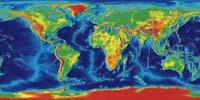
XX. In the early twentieth century, German Alfred Lothar Wegener published the Theory of Continental Drift. Taking into account the shapes of the continents, the fossils, etc., he proposed that Pangea, former only great continent, was divided into the present continents. From there, the theory of plate tectonics was developed. And today no one questions it. The terrestrial crust is formed by several plates. These plates are in motion, formed in the oceanic dorsal and disappear in the subduction zones, that is, the plates sink one under the other and melt in the mantle.
The heat inside the earth is the engine of tectonic plates, and the physico-chemical properties of the mantle and the terrestrial surface are important to support the theory. However, as we go back in time, there is a greater probability that these factors will be less similar to the current ones. Some scientists have argued that the surface plates that were formerly on the hot and soft material were too thick and floating to sink one under another, as it happens today, and that the initial high temperature of the earth would provoke a very uneven movement of the plates.
Nor have phenomena such as plate tectonics on other Earth-like planets been observed. The planets do not have to function that way, and scientists believe that the Earth has not always functioned as it is today.
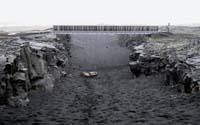
Keys to plate tectonics
But clarifying the origin of plate tectonics is not an easy task. On the one hand, the possible indications are scarce and difficult to interpret, and on the other hand, it is not easy to determine what factors are essential to explain the theory of plate tectonics. Not all scientists agree and offer different definitions for plate tectonics. However, most agree with three key elements of the theory: On the surface of the Earth there are rigid plates that move through ocean expansion as the new surface is formed, and the plates sink one under another in the subduction zones.
But one of these three characteristics, and almost two, could occur on Earth without plate tectonics. That is, there may be rigid plates and move between them, but that does not necessarily mean that there is plate tectonics. For example, according to paleomagnetic studies, researchers have found that in the archaic era (3,800-2,800 million years ago) the surface plates moved one on the other, but the ice cubes move in the same way in the polar sea and are not exposed to plate tectonics.
Among the three, the subduction seems the most appropriate feature for the diagnosis of plate tectonics. The subduction is a process of sinking a plate under the other to recycle it in the mantle. For this purpose, rigid plates are necessary and the creation of a new crust elsewhere, since otherwise the surface of the earth will disappear. Therefore, for some scientists, the subduction remains are a sample of what was then running the plate tectonics.
In the footprint of the subduction
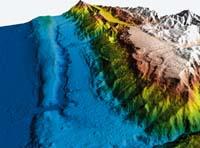
As a subduction footprint, Stern considers three types of rocks. On the one hand, the ofiolites, which are characteristic parts of the oceanic crust and which often appear crumbled on the banks of the continents by effect of the subduction. So, according to Stern, there are very few officers who exceed one billion years. On the other hand, the blue schists are produced by the basalt pressure but low basalt temperature. Currently they originate in subduction zones, but the oldest blue schist does not exceed 800 million years. And, finally, the unique structures that form when climbing one plate over another through very high pressures have a maximum age of 630 million years.
It also mentions another point: the beginning of a process like plate tectonics would have consequences on a planetary scale. And between 780 and 580 million years ago there were very hard glaciations. According to Stern, with the beginning of plate tectonics, there was an increase in volcanic activity that cooled the planet, which caused these glaciations.
Earth, still young and hot
Most researchers consider that plate tectonics is older. Alfred Kröner, a researcher at the University of Mainz in Germany, does not share Stern's arguments. The German considers that there is enough evidence to think that at least 3,100 million years ago plate tectonics were underway: geochemical works, seismic images and even a few operolites.

A recent work published by Australian modeler Geoff Davies has also solved one of the biggest problems to explain the early start. In fact, Davies and other researchers proposed, in the early 1990s, that in the early Earth the land surface was too thick and floating to be able to introduce one plate under another. But now, using more sophisticated calculations, they have proposed that the terrestrial surface could be thinner than was thought, 4 km or less, even thinner than the current one. Therefore, in this sense, it would not be possible that the plate tectonics would have begun before the foreseen.
Also very old are the circuses of the region of Jack Hills, in the west of Australia. But it is not easy to know what they can give clues. The zircons are crystals originated in the Hadea period (from the foundation of the Earth, 4,570 million years ago, to 3,850 million years ago) and later introduced into younger rocks. The University of California geochemist Mark Harrison and his colleagues believe that the continental crust existed 4,400 to 4,500 million years ago.
This conclusion has been drawn from the proportions of hafnio-radioactive isotopes found in circus crystals. In fact, the proportions 176 Hf/ 177 Hf allow differentiating between surface and mantle. These studies have concluded that the terrestrial surface existed for that time and that, in addition, it was recycled immediately and became a mantle. And Harrison believes this can happen through a process like plate tectonics.
But Simon Wilde, from Curtin University of Australia, believes that you can't go so far by drawing conclusions with the circuses of Jack Hills. He says that we must be careful with these rocks, since the interpretations of the different proportions of hafnio from one point to another can be diverse. It coincides with Harrison that then there was a certain terrestrial surface, but it does not correspond to the recycling and tectonic points of plates.
Two faces of the same rock

The western zone, for its part, has between 3,300 and 3,000 million years of antiquity and abound the traces of tectonics. On the one hand, there are geochemical cracks that cannot be explained otherwise, and on the other, Smithies sees remains of an oceanic arch in some of the features of the rocks. The oceanic arches are sets of islands that are usually formed in subduction zones.
But this hypothesis also has a rival. For Julián Pearce, of the University of Cardiff in Wales, all the remains that can be found in the western part of the Pilar -- for example, the mixture of surface materials of different magmas or places with abnormal amounts of water -- can be explained without the need for plate tectonics, through other phenomena.
Dozens of heads
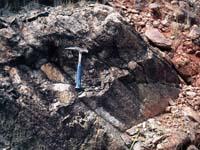
There are those who argue that plate tectonics have changed in time. For the geologist of the University of Maryland, Michael Brown, there have been two types of tectonics: the one we know today and an earlier version of 2,700-700 million years ago. Brown takes into account the characteristics of minerals. The minerals that are produced at lower pressure and at higher temperature are indicators of the old type of tectonics. They suggest a warmer land where the subduction was not produced. On the contrary, the high pressure minerals indicate the tectonics of the current plates. Taking into account the characteristics of these minerals, Brown believes that the actual plate tectonics, the current one, began 700 million years ago.
Finally, others propose that plate tectonics have been initiated and paralyzed on several occasions throughout the history of the Earth.
As you can see, there is not much consensus on the start date of the process that shapes the world. From the same footprint, interpretations can be very different according to scientists. It seems, however, that the majority now place it between 3,000 and 4,000 million years. But the debate is still booming. And geologists will have to keep tracking the tectonics, when to find new strokes.
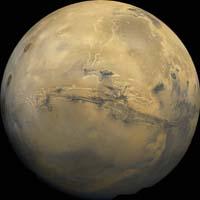
Buletina
Bidali zure helbide elektronikoa eta jaso asteroko buletina zure sarrera-ontzian











